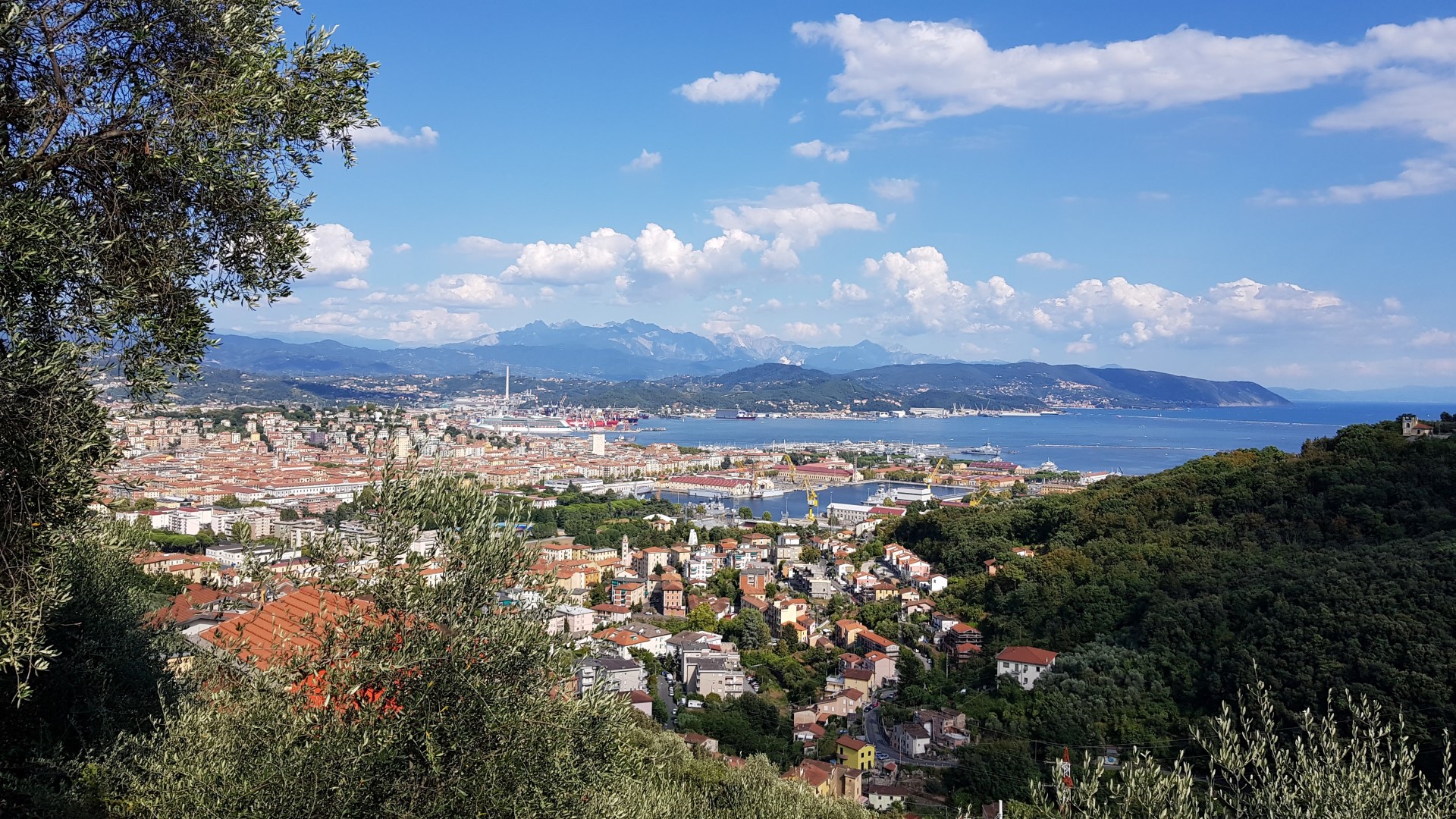
La Spezia
Gulf of the Poets
“There is no natural inlet nor harbor in all the Mediterranean area which better lends itself to harbour and where it’s easier and safer to operate…”. With the rising of the golden age of sealing, the Gulf, protected by the northern winds and rich in natural landingplaces, becomes famous around the world. Where Petrarca, arriving here on a light “felucca” boat, is fascinated by its natural beauty, Napoleon Bonaparte plans to create, for this very Gulf, the biggest military port in Europe.
La Spezia is a beautiful town nestled in the Gulf of the Poets; it can be visited on foot, in total relax, to discover all its treasures. Starting your journey from the “Molo Italia” pier, the landingplace for ferries, through the historical public gardens with the “Palco della Musica”, a Liberty jewel, you will reach “Via Chiodo” with its beautiful arcades and “Via Prione” too, a lively “carugio” in the historical part of town. Here the “Teatro Civico” shines, a theatre designed by Franco Oliva, and a little further away a stretch of the walls dating back to the XVII century appears; here there once was the Navy Door that let into the walled city, right in its heart. The following museums are simply a must: “Tecnico Navale”, “Diocesano”, “Etnografico”, “Amedeo Lia”, “CAMeC” and the “Sigillo” Museum; the “Accademia Capellini” and the beautiful “Sant’Agostino”Square with its sculpture of the “Contessa of Castiglione’s bust”.
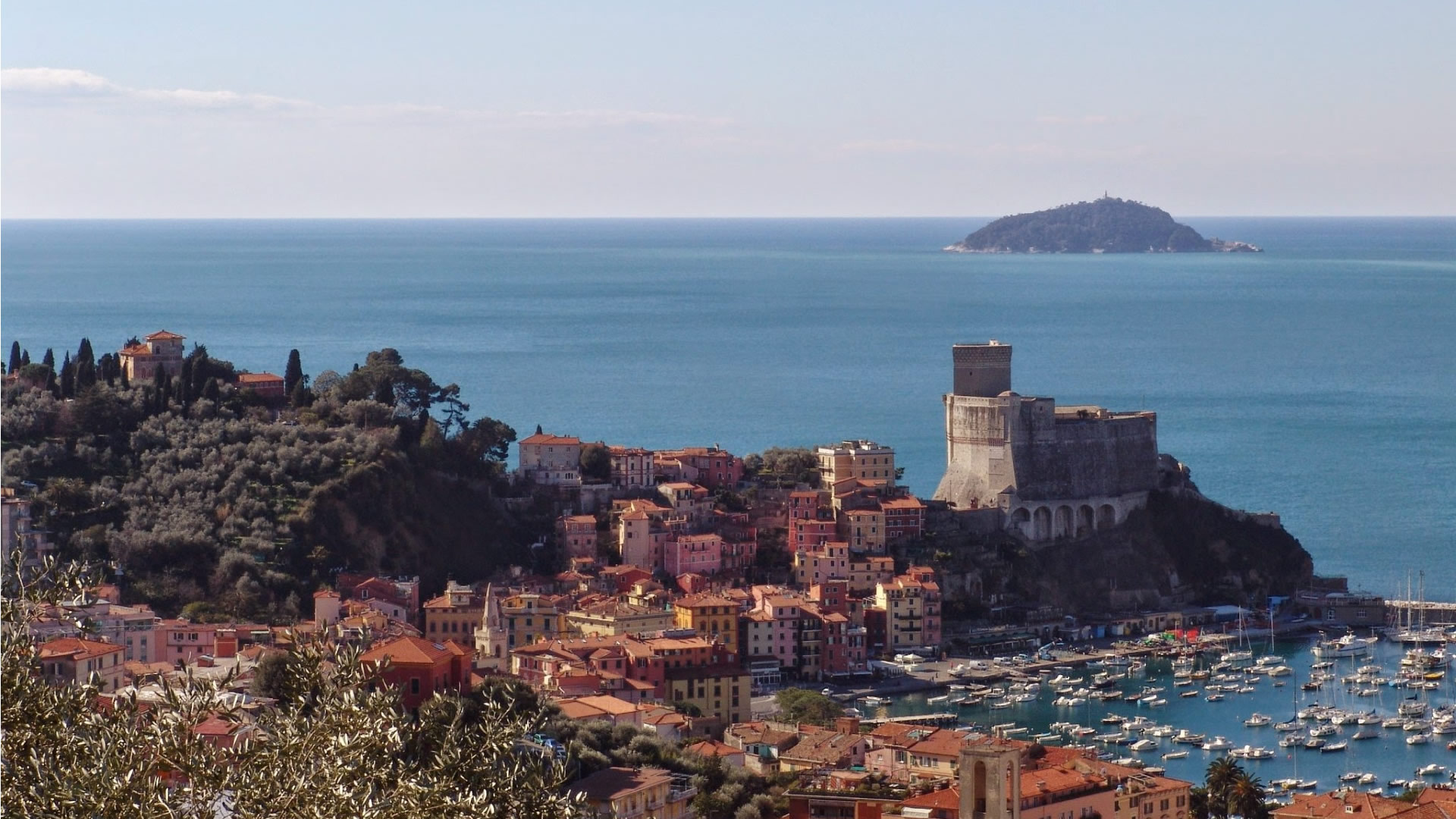
Lerici
Gulf of the Poets
“We drive along this delightful bay in the evening wind, under the summer moon, until earth appears another world”. Percy B. Shelley describes this way the bay of Lerici. Lerici, of Roman origin, is a pretty village on the sea dominated by its medieval castle, now home to the Geopaleontological Museum. The mildness of the climate and the pleasantness of this landscape makes Lerici the ideal destination, in every season, for long stays or weekends characterized by sunshine, art and good cuisine. The territory of Lerici is included in the Regional Natural Park of Montemarcello-Magra-Vara, a wide protected area dominated by the Mediterranean scrub. We recommend to explore the waters of the “Caletta” of Lerici, where the remains of a Roman ship sank in this very spot were found. It’s a wonderful natural inlet you can descend to from the main road leading to Fiascherino or reach by boat too. True musts are definitely the gothic Chapel of “St. Anastasia”, inside the Castle, and the hexagonal tower, the “Oratory of St. Rocco” with the painting of “Giovanni Battista Casoni”, the Church of “St. Francesco” with the two paintings by “Fiasella” and the Doria Palace with its Museum. From “Piazza della Repubblica” you will admire the little harbor with the panoramic path that on one hand leads to the Castle and on the other, through a beautiful seafront promenade, takes you to the “Venere Azzurra” and “St. Terenzo” beaches. In Lerici it’s possible to visit: “Ca’ (House) Doria”, “Ca’ Rugia”, “Villa Padula” and “Palazzo Marchesi. Ollandini”; Villa Magni and the “Serenella” in S. Terenzo; “Villa Pernigotti”, “Villa Marigola” with its “Giardino all’Italiana” and “Villa Petriccioli” along the “Venere Azzurra” area; Lawrence’s “Casa Rosa”- “Pink House” in Fiascherino. “Mount Caprione”, “Punta Bianca”, “Punta Corvo” and the historic hamlets of “Montemarcello” and “Ameglia” are of great naturalistic attraction too.
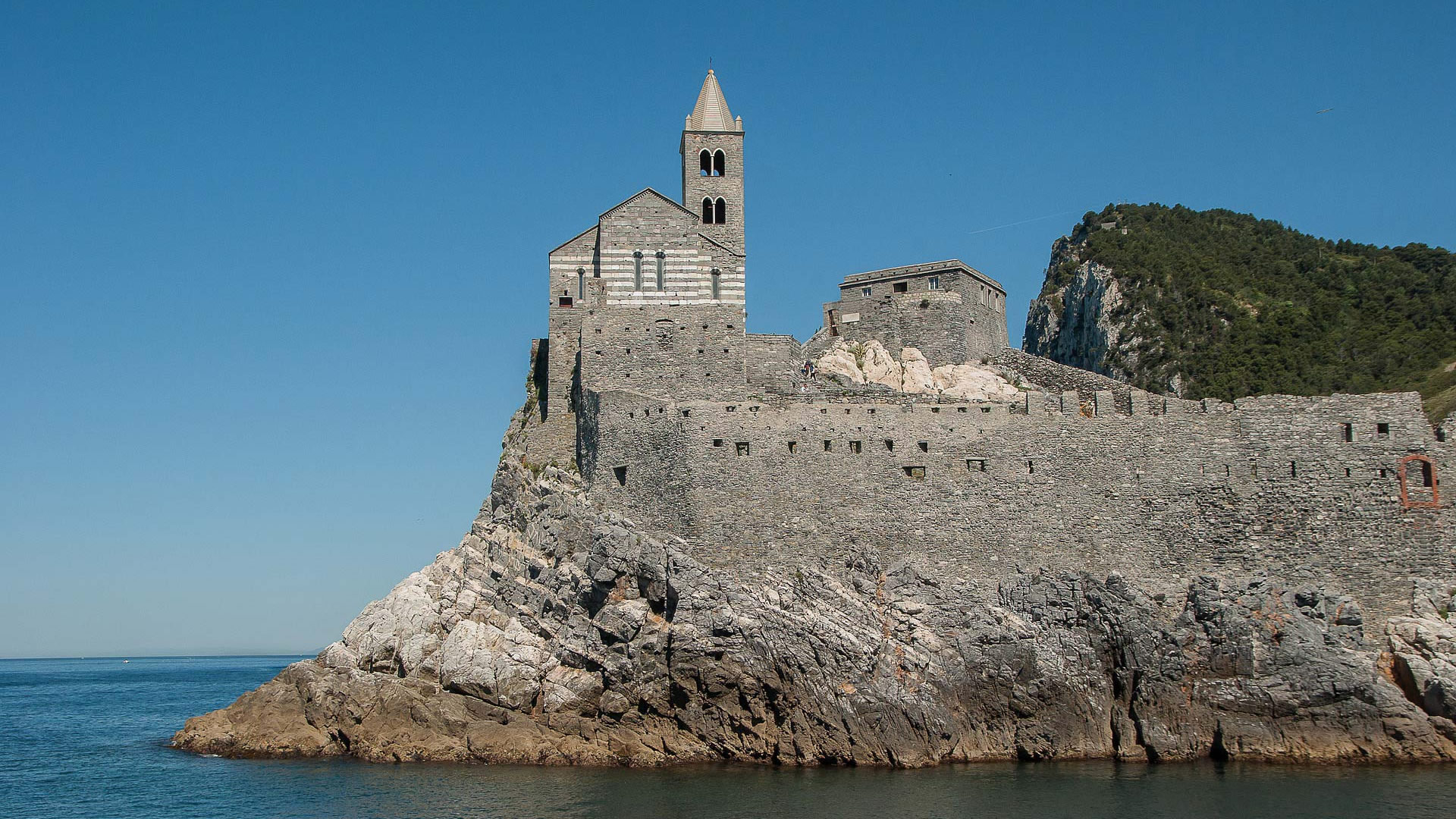
Portovenere and its Islands
Gulf of the Poets
Portovenere is an ancient hamlet on the sea, famous for the incomparable environmental context in which it’s placed and its historical colourful tower-houses, built by “colonists” from Genoa, aligned on the “Doria Wharf”. Its tip with the Church of St. Peter’s in gothic-Genoese style, the
“Bocche” and the Islands make a unique landscape, visited by a lot of people coming from all over the world. “St. Lorenzo” Church, in Romanesque style, preserves the altar of the “Madonna Bianca” and the “beam of the relics”. Notable is the massive Genoese Castle rising above, which
during the summer hosts many art exhibitions. Facing Portovenere, on the western coast of the Palmaria Island, the “Azzurra” Cave of volcanic origin and the calls of Portoro marble quarries are paradises to explore. Next, the adjacent “Tino Island” with its lighthouse and the military area, the Sanctuary of “San Venerio” and the pristine Mediterranean vegetation; finally, the “Tinetto Island”, a rock stretching towards the south where the remains of an ancient convent lie. On 17 August each year the celebration of the White Madonna occurs; she’s the Saint protector of
the inhabitants of this village. In the pretty ancient hamlet of “Le Grazie” every year, on the 8 of September, the “Madonna delle Grazie” is celebrated; its Sanctuary was erected in the same place where the Olivetan Abbey stands today.
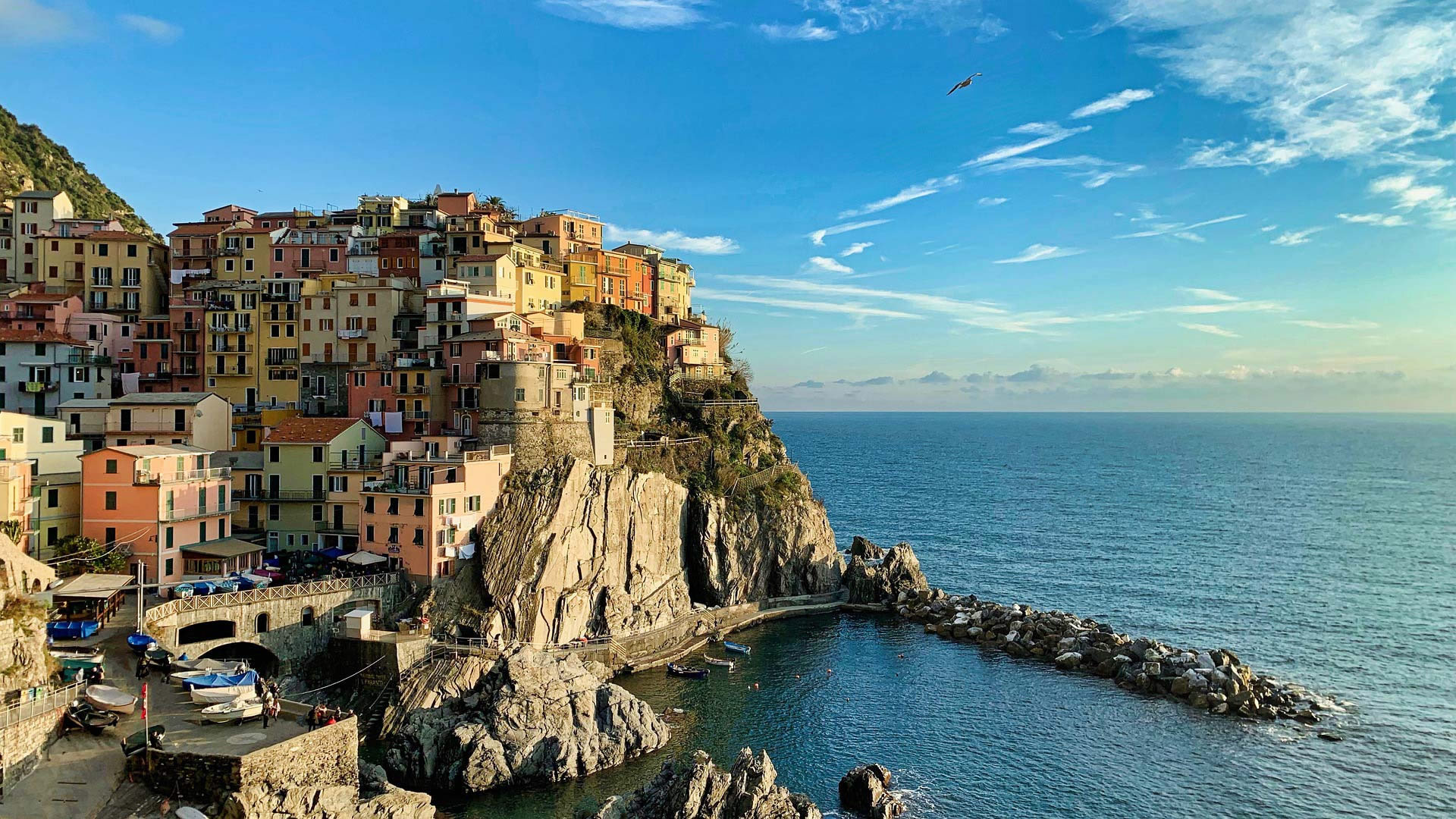
Cinque Terre
From Riomaggiore to Monterosso
The Cinque Terre or Five Lands are five villages: Riomaggiore, Manarola, Corniglia, Vernazza and Monterosso. Because of the rare flora and fauna and the uniqueness of its position, the Cinque Terre have become a World Heritage of UNESCO since 1998. The Cinque Terre National Park and Marine Reserve were established respectively in 1997 and in 1999. They include the town halls of Riomaggiore, Vernazza, Monterosso, part of Levanto and La Spezia. The fragile rocks which rise from the sea have been moulded by man into dry stone terraces. These terraces contain vineyards which produce the famous white wine, “Schiacchetrà”. These ancient villages, clinging to the rocks, have small ports and enchanting but often steep footpaths.This area of the Ligurian Sea is part of the International Cetacean Centre. There are many footpaths with various degrees of difficulty. It is also possible to go horseback riding and mountain biking. Sand and pebble beaches can be reached on foot or by boat. All the five villages are served by railway. During the summer there are ferry boats which connect the Cinque Terre to other
Riviera, Gulf and Versilia towns. Today the “Via dei Santuari” (the Sanctuary Way), once a footpath, has become Provinciale Road 51. This path has existed since medieval times. Also, today this road still connects the five Sanctuaries. The latter still preserve holy images and ex-voto and
are the perfect places where one can pause, rest and pray. Many footpaths start from the Sanctuary Way. They go along the whole Riviera and also to the Val di Vara.
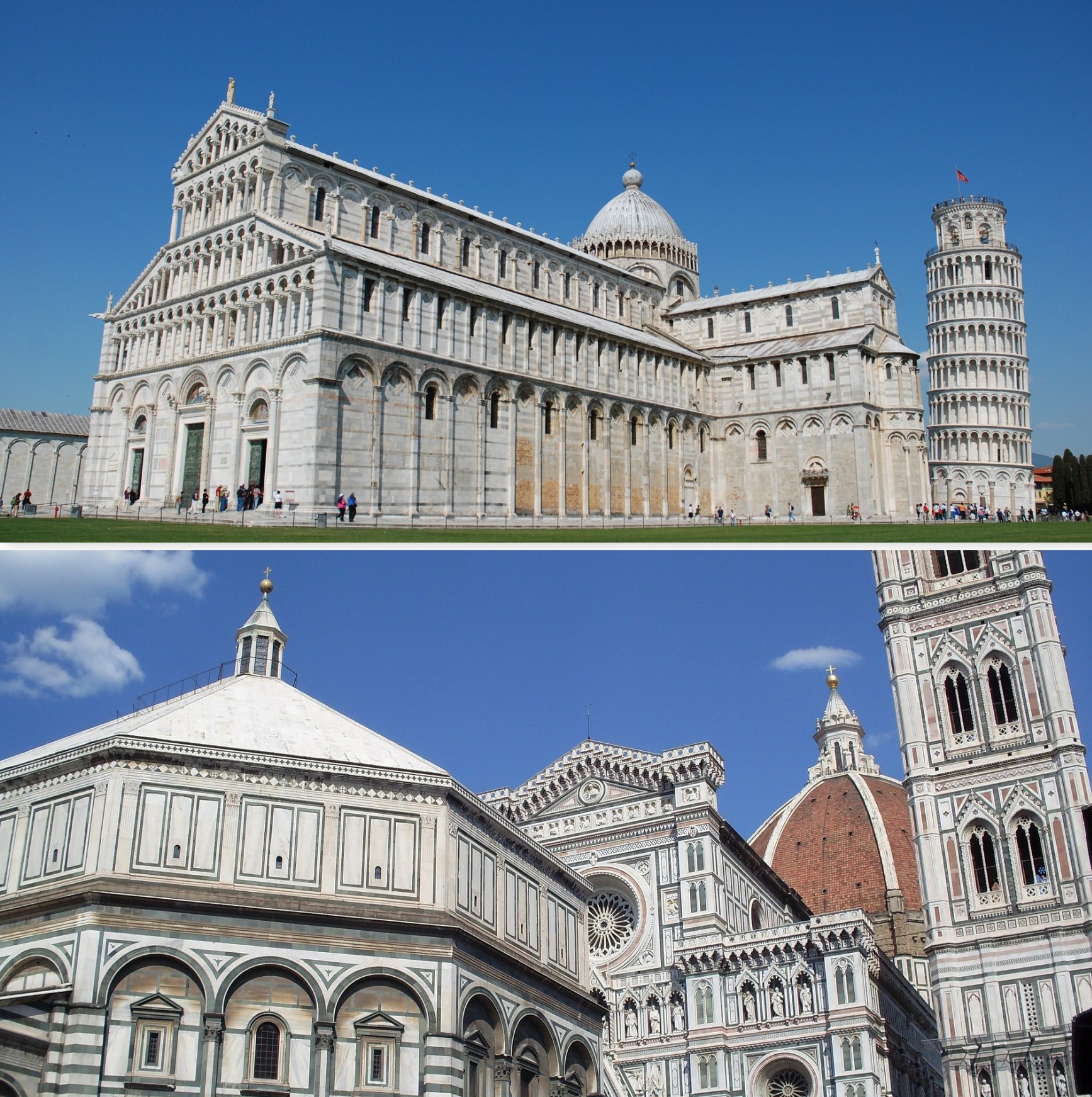
Place to Visit
Tuscany
“Gardenhouse” holiday home also recommends to comfortably visit by train or car the following touristic places in Tuscany, all reachable in a short time.
Lucca with its Sixteenth century massive walls embracing it all: Lucca’s Cathedral, St. Martino Square, the Ducal Palace, the Church of San Roman and the Church of Saint Alexander, the Mansi Palace and the Giunigi Palace, the Church of St. Francis and St. Micheal Square.
Massa,a town strongly connected with Carrara, boasts the Malaspina Fortress or Castle, the Ducal Palace, the Cathedral, the Aranci Square and the Aghinolfi Castle in Montignoso town hall.
Forte dei Marmi,a renowned holiday resort on the sea and a shopping destination for all with its exclusive boutiques, hosting the Museum “Ugo Guidi”, the Church of “Saint Ermete”, the “Lorenese Fort” or “Little fort”, the Museum of the Satire and Caricatures, the “Navari Square” and the “Emilio Tarabella” Pinewood.
In Pietrasanta, a beautiful and ancient hamlet, hometown to Giosuè Carducci, it’s advisable to visit the Cathedral with its Square, the MuSA Museum, the Versilia archaeological Museum “Bruno Antonucci”, the Pretorio Palace, the Moroni Palace, the “Sala Fortress” and the “Versiliana Festival”.
In Marina di Carrara, besides the characteristic historical centre, you can admire the Parish Church, of ancient foundation, which, to this date, preserves valuable works of art, and its countless natural treasures.The nearby Carrara, renowned for its Marble Caves.
Pisa, with the Cathedral Square hosting the magnificent Tower of Pisa, the Cathedral, the monumental Cemetery, the Baptistery of St. John and the Museum of the Cathedral’s Opera. Don’t miss the Knights Square with the Palace of the Carovan and the St. Stephen of the Knights Church, the Church of “Santa Maria della Spina”, The Museum of the Sinopias, the Blue Palace and the Charterhouse of Pisa.
Florence, a beautiful city of the arts par excellence, hosting many masterpieces of Renaissance art and architecture. Absolute musts: the Cathedral of Saint Mary or Florence Cathedral with Giotto’s Bell tower and Brunelleschi’s Dome, the “Uffizi Gallery”, the “Loggia of the Lanzi”, the “Palazzo Vecchio”, the “Ponte Vecchio”, the Vasarian Corridor, the Pig’s Fountain, the Pitty Palace, the David of Michelangelo, the “Signoria Square” with Neptune’s Fountain, the Gallery of the Academy of Florence, the Basilica of the Holy Cross, the Baptistery of St. John, the Garden of Boboli and the Bardini one, the Michelangelo Square, the Bargello National Museum and that of St. Mark, the Basilicas of St. Lawrence, “Santa Maria Novella” and Saint Spirit, the Republic Square, the Bargello Museums with the “Medici Chapels”, the Museum of the Opera of “Santa Maria del Fiore”, The Medici Riccardi Palace, the Abbey of “San Miniato al Monte”, the Strozzi Palace, the Castellani Palace with the Galileo Museum and the Belvedere Fort.
Lucca with its Sixteenth century massive walls embracing it all: Lucca’s Cathedral, St. Martino Square, the Ducal Palace, the Church of San Roman and the Church of Saint Alexander, the Mansi Palace and the Giunigi Palace, the Church of St. Francis and St. Micheal Square.
Massa,a town strongly connected with Carrara, boasts the Malaspina Fortress or Castle, the Ducal Palace, the Cathedral, the Aranci Square and the Aghinolfi Castle in Montignoso town hall.
Forte dei Marmi,a renowned holiday resort on the sea and a shopping destination for all with its exclusive boutiques, hosting the Museum “Ugo Guidi”, the Church of “Saint Ermete”, the “Lorenese Fort” or “Little fort”, the Museum of the Satire and Caricatures, the “Navari Square” and the “Emilio Tarabella” Pinewood.
In Pietrasanta, a beautiful and ancient hamlet, hometown to Giosuè Carducci, it’s advisable to visit the Cathedral with its Square, the MuSA Museum, the Versilia archaeological Museum “Bruno Antonucci”, the Pretorio Palace, the Moroni Palace, the “Sala Fortress” and the “Versiliana Festival”.
In Marina di Carrara, besides the characteristic historical centre, you can admire the Parish Church, of ancient foundation, which, to this date, preserves valuable works of art, and its countless natural treasures.The nearby Carrara, renowned for its Marble Caves.
Pisa, with the Cathedral Square hosting the magnificent Tower of Pisa, the Cathedral, the monumental Cemetery, the Baptistery of St. John and the Museum of the Cathedral’s Opera. Don’t miss the Knights Square with the Palace of the Carovan and the St. Stephen of the Knights Church, the Church of “Santa Maria della Spina”, The Museum of the Sinopias, the Blue Palace and the Charterhouse of Pisa.
Florence, a beautiful city of the arts par excellence, hosting many masterpieces of Renaissance art and architecture. Absolute musts: the Cathedral of Saint Mary or Florence Cathedral with Giotto’s Bell tower and Brunelleschi’s Dome, the “Uffizi Gallery”, the “Loggia of the Lanzi”, the “Palazzo Vecchio”, the “Ponte Vecchio”, the Vasarian Corridor, the Pig’s Fountain, the Pitty Palace, the David of Michelangelo, the “Signoria Square” with Neptune’s Fountain, the Gallery of the Academy of Florence, the Basilica of the Holy Cross, the Baptistery of St. John, the Garden of Boboli and the Bardini one, the Michelangelo Square, the Bargello National Museum and that of St. Mark, the Basilicas of St. Lawrence, “Santa Maria Novella” and Saint Spirit, the Republic Square, the Bargello Museums with the “Medici Chapels”, the Museum of the Opera of “Santa Maria del Fiore”, The Medici Riccardi Palace, the Abbey of “San Miniato al Monte”, the Strozzi Palace, the Castellani Palace with the Galileo Museum and the Belvedere Fort.